304. There seems to have been a 'kennel' for breeding and housing these 'dogs' and Porrima was said to be a Barker:
| JAN 23 (388) |
24 |
25 (*310) |
26 |
27 (392) |
28 |
29 (*314) |
 |
 |
 |
 |
 |
 |
 |
| Gb7-5 |
Gb7-6 (416) |
Gb7-7 (188) |
Gb7-8 |
Gb7-9 |
Gb7-10 (420) |
Gb7-11 (192) |
 |
 |
 |
 |
 |
 |
 |
| Gb3-18 |
Gb3-19 (80) |
Gb3-20 (310) |
Gb3-21 |
Gb3-22 |
Gb3-23 (84) |
Gb3-24 (314) |
| ANDROMEDA GALAXY (M31), π Andromedae (7.7) |
ε Andromedae (8.2), DELTA = δ Andromedae (8.4), SCHEDIR (Breast) = α Cassiopeiae (8.6), ζ Andromedae, μ Phoenicis (8.9) *8.4 + *365 - *41.4 = *332 |
ξ Phoenicis (9.0), ρ Tucanae (9.1), DENEB KAITOS (Tail of the Sea Beast) = β Ceti, η Phoenicis (9.4), AL NITHĀM (String of Pearls) = φ¹ Ceti (9.6) |
ACHIRD (Woman With Luminous Rays) = η Cassiopeiae (10.7) |
Legs-15 (Wolf) ν Andromedae (11.0), φ² Ceti (11.1), ρ Phoenicis (11.2), η ANDROMEDAE (11.4) |
CIH (Whip) = γ Cassiopeiae, λ Tucanae (12.4), φ³ Ceti (12.6), μ Andromedae (12.8) *12.4 + *365 -*41.4 = *336 (= 4 * 84) |
φ4 Ceti (13.2) |
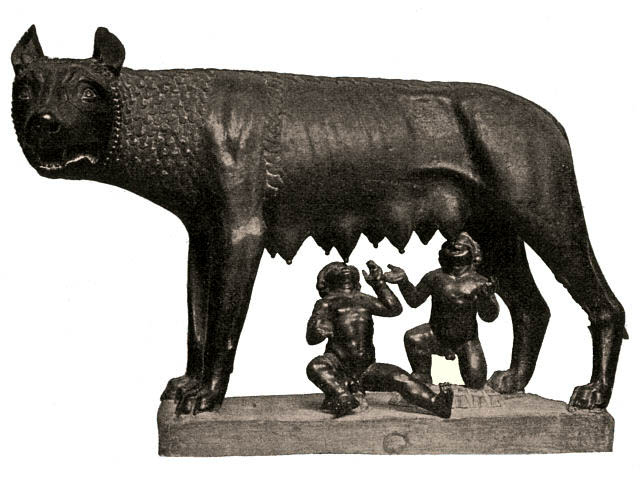 |
| 28 (*372) |
29 (88) |
30 (454) |
March 31 |
April 1 (91) |
2 |
3 (*378) |
| °March 24 (*368) |
25 (84) |
26 (450) |
°March 27 |
28 |
29 (88) |
30 (*374) |
| 'March 1 (60) |
2 (*346) |
3 (427) |
'March 4 (428) |
5 (64) |
6 (*350) |
7 |
| "Febr 15 (46) |
16 (*332) |
17 (14 * 29½) |
Tehetu'upú
18 (414) |
19 (50) |
20 (*336) |
21 |
| CLOSE TO THE
FULL MOON: |
| JULY 25 |
26 (*127) |
27 (208) |
JULY 28 |
29 (210) |
30 |
31 (*132) |
| α Muscae (190.2), τ Centauri (190.5), χ Virginis (190.7)
ALDERAMIN (α Cephei)
|
Al Áwwā'-11 (The Barker) / Shur-mahrū-shirū-18 (Front or West Shur) Sombrero Galaxy = M104 Virginis (191.1), ρ Virginis (191.4), PORRIMA = γ Virginis, γ Centauri (191.5) |
ι Crucis (192.2), β Muscae (192.5), MIMOSA = β Crucis (192.9) |
no star listed (193) |
κ Crucis (194.4), ψ Virginis (194.5), μ Crucis, λ Crucis (194.6), ALIOTH = ε Ursae Majoris, ι Oct. (194.8) |
MINELAUVA = δ Virginis (195.1), COR CAROLI = α Canum Ven. (195.3) |
δ Muscae (196.5), VINDEMIATRIX = ε Virginis (196.8) |
... The Latins called this Porrima, or Antevorta, sometimes Postvorta, names of two ancient goddesses of prophecy, sisters and assistants of Carmenta or Carmentis, worshiped and at times invoked by their women. Porrima was known as Prorsa and Prosa by Aulus Gellius of our 2d century. γ was specially mentioned by Kazwini as itself being Zāwiat al 'Awwā', the Angle, or Corner, of the Barker; and Al Tizini, with Ulug Beg, had much the same name for it; but Al Bīrūnī, qouting from Al Zajjāj, said 'these people are all wrong', and that 'Awwā' here meant 'Turn', referring to the turn, or bend, in the line of stars ...
... Janus was perhaps not originally double-headed: he may have borrowed this peculiarity from the Goddess herself who at the Carmentalia, the Carmenta Festival in early January, was addressed by her celebrants as 'Postvorta' and 'Antevorta' - 'she who looks both back and forward' ... Antevorta and Postvorta had two altars in Rome and were invoked by pregnant women as protectors against the dangers of childbirth. Antevorta was said to be present at the birth when the baby was born head-first; Postvorta, when the feet of the baby came first ...
Heads or tail in other words; it was a game of chance (hazard, gambling): .jpg)
... An element of hazard (gambling) was present at the equinoxes according to the ancient Babylonians: ... In ancient Babylonia they imagined the earth was bulging upwards because down below under the earth, in the darkness, there was a huge freshwater reservoir (apsū). The form of the earth was therefore like an overturned boat: Da ferner sofort nachgewiesen werden wird, dass sich der apsū unter der Erde ihrer ganzen Ausdehnung nach befindet und ein Höhlung unter der Erde nur verursacht werden kann durch eine Wölbung der Erde, werden wir nicht umhinkönnen, diese Vorstellung von dem apsū wieder gespiegelt zu sehen in dem Bericht des Diodor, dem gemäss die Erde von den Chaldäern in der Gestalt eines umgestülpten Bootes vorgestellt wurde. (Jensen)
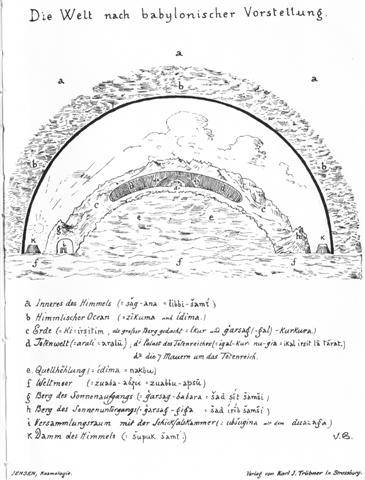
... At the letter i there is 'der Versammlungsraum mit der Schicksalskammer' (assembly hall with a room for deciding the outcome) ...
... Before the beginning of a new 'year' (= halfyear) it is not yet determined what will come. According to the Babylonian view there was a chamber of hazard where the sky roof meets earth: ... Als solch ein Ort (resp. ein Gemach) im Osten des apsū [water below the earth] und im Osten der Erde an der Grenze zwischen dem sichtbaren und unsichtbaren Reiche hat der Duazag eine ganz besondere Bedeutung im Glauben der Babylonier. Er ist ... 'der Ort der Geschicke', der ki nam-tar-tar-ini = aar imātum. Ein Solcher konnte nur im Osten liegen. Denn die Sonne geht im Osten auf. Die Ostsonne ist Marduk. Darum bringt auch Marduk die Geschicke aus der Behausung seines Vaters Ía, dem Urwasser, hervor ...
Von diesem [Nebukadnezar's II grosser Inschrift] heisst es ... 'Duazag, der Ort der Geschicke im Ubugina [Versammlungsraum], das (dem?) Gemach der Geschicke, in dem im Zakmuku
[= F(e)ast for Marduk at the beginning of the year to determine (make fast) the future (of the year/halfyear) for which the gods went to Marduk's tempel Ĭsagila in Babylon: '... zu dem sich die übrigen Götter und vor Allem Barsip(pa)'s Hauptgott Nabū in feierlichem Zuge zu Schiff ... begaben ...']
zu Jahresanfang am 8-ten (und?) am 11-ten Tage [rather: from the 8th up to and including the 11th day of the God-King] der (Gott-)König .... sich niederlässt und die Götter über Himmel und Erde .... das Schicksal der Zukunft .... bestimmen ....'
... Ganz ähnlich is der Name 'Gott von Duazag' des Gottes Nabū ... zu erklären. Er bezeichnet ihn als den Gott des Wachtstums, welches als aus dem Osten stammend betrachtet wird, weil die Sonne, die das Wachstum bringt, im Osten aufgeht. Dass aber Nabū als Ost-Gott aufgefasst wurde, hängt damit zusammen, dass sein Stern, der Mercur, nur im Osten oder Westen sichtbar ist ...

... Wir begreifen, warum der Tirītu durch 'Monat (des) Duazaga' bezeichnet wird. Denn in diesem findet die Aussaat des Korns (insbesondere ... des Weizens und der Gerste) statt, der Duazag aber hat zu diesen ... als Ort des Gottes, der das Wachstum des Weizens befördert, eine ganz bestimmte Beziehung ¹.
¹ Beachte aber, dass der erste Monat des Jahres nach dem Schicksalsgemach (= Ubugina) bezeichnet wird ... , der siebente aber d.i. der erste der zweiten Jahreshälfte nach dem im Ubugina befindlichen Duazaga. Sollte darum die Deutung des Namens Tirītu als 'Anfang' doch vorzuziehen sein? (Peter Jensen, Die Kosmologie der Babylonier.)
|
| Sept 27 (*190) |
28 |
29 (272) |
30 |
Oct 1 |
2 (*195) |
3 |
| °Sept 23 |
24 |
25 (268) |
26 |
27 (270) |
28 |
29 (*192) |
| 'Aug 31 |
'Sept 1 (*164) |
2 (245) |
3 (246) |
4 |
5 (*168) |
6 |
| "Aug 17 |
18 (*150) |
19 (231) |
20 |
21 |
22 (*154) |
23 |
 |
 |
 |
 |
 |
 |
 |
| Ga5-16 |
Ga5-17 |
Ga5-18 (128) |
Ga5-19 |
Ga5-20 |
Ga5-21 |
Ga5-22 |
| → OROMANGA |
Hora Iti 20 (8 * 29)
Papa O Pea
(5 days) |
21 |
22 |
23 |
 ... All the kinsmen spoke to you [koe] (i.e. Kuukuu): 'Even you did not prevail against the turtle!' They put the injured Kuukuu on a stretcher and carried him inland. They prepared a soft bed for him in the cave and let him rest there. They stayed there, rested, and lamented the severely injured Kuukuu. Kuukuu said, 'Promise me, my friends, that you will not abandon me!' They all replied, 'We could never abandon you!' [E:29] They stayed there twenty-seven days in Oromanga. Everytime Kuukuu asked, 'Where are you, friends?' they immediately replied in one voice, 'Here we are!' They all sat down and thought. They had an idea and Ira spoke, 'Hey, you! Bring the round stones (from the shore) and pile them into six heaps of stones!' One of the youths said to Ira, 'Why do we want heaps of stone?' Ira replied, 'So that we can all ask the stones to do something.' They took (the material) for the stone heaps (pipi horeko) and piled up six heaps of stone at the outer edge of the cave. Then they all said to the stone heaps, 'Whenever he calls, whenever he calls for us, let your voices rush (to him) instead of the six (of us) (i.e., the six stone heaps are supposed to be substitutes for the youths). They all drew back to profit (from the deception) (? ki honui) and listened. A short while later, Kuukuu called. As soon as he had asked, 'Where are you?' the voices of the stone heaps replied, 'Here we are!' All (the youths) said, 'Hey, you! That was well done!'. He (i.e., Ira) said, 'Let's go! We shall go to Papa O Pea'. They all got up and moved on. On the twentieth day of the month of August ('Hora Iti') they went to Papa O Pea. They all went and came to Papa O Pea, looked around in Papa O Pea, and gave the name 'Papa O Pea A Hau Maka'. They stayed five days in Papa O Pea ... |
|
Pea. (Also peapea): To go away with bits of food or mud sticking to one's face or garments. Vanaga. Peaha, perhaps ... maybe, chance, doubtful; reoreo peaha ... Ma.: pea, perhaps. Peapea, an erasure ... hakapeapea ... Peau, to sweep all away. Ma.: peau, to be turned away. Churchill. Peau, a wave (Sa., To., Fu., Fotuna, Niuē, Mq., Nuguria); Mgv.: peau, peahu, id. Churchill 2. ... But in the fullness of time an obscure instinct led the eldest of them towards the anthill which had been occupied by the Nummo. He wore on his head a head-dress and to protect him from the sun, the wooden bowl he used for his food. He put his two feet into the opening of the anthill, that is of the earth's womb, and sank in slowly as if for a parturition a tergo. The whole of him thus entered into the earth, and his head itself disappeared. But he left on the ground, as evidence of his passage into that world, the bowl which had caught on the edges of the opening. All that remained on the anthill was the round wooden bowl, still bearing traces of the food and the finger-prints of its vanished owner, symbol of his body and of his human nature, as, in the animal world, is the skin which a reptile has shed ... |
| JAN 30 |
31 (396) |
FEBR 1 |
2 (33) |
3 |
4 (*320) |
45 |
59 |
 |
 |
 |
 |
 |
 |
| Gb7-12
(193) |
Gb7-13 |
Gb7-14 |
Gb7-15 |
Gb7-16 |
Gb7-17
(427) |
| no star
listed
(14) |
1h
(15.2) β
Phoenicis
(15.1),
υ
Phoenicis,
ι
Tucanae
(15.6),
η Ceti,
ζ
Phoenicis
(15.7) |
Al Batn
Al
Hūt-26
(Belly
of the
Fish) /
Revati-28
(Prosperous)
/ 1-iku
(Field
Measure) MIRACH
(Girdle)
= β
Andromedae,
KEUN MAN
MUN
(Camp's
South
Gate) =
φ
Andromedae
(16.0),
ANUNITUM
= τ
Piscium
(16.5),
REVATI
(Abundant)
= ζ
Piscium
(16.9)
REGULUS
(α
Leonis)
|
ν
Phoenicis
(17.4),
κ
Tucanae
(17.6) |
no star
listed
(18) |
ADHIL
(Garment's
Train) =
ξ
Andromedae (19.3),
θ Ceti
(19.7) |
| April 4 |
5 (460 = 396 + 64) |
6 |
7 |
8 (*383) |
9 (99) |
| °March
31 |
°April 1
(91) |
2 (*377) |
3 |
4 |
5 (460) |
| 'March 8 |
9 |
10 |
11
(*355) |
12 |
13 (72) |
| "Febr 22
(53) |
TERMINALIA |
24 (420) |
Tehetu'upú
25 |
26 |
27
(*343) |
| CLOSE TO THE FULL MOON: |
| AUG 1 |
(214 =
31 +
183) |
3 (*135) |
4 (*501) |
5 |
6 |
| 13h
(197.8) ξ¹
Centauri
(197.1),
ξ²
Centauri
(197.9) |
APAMI-ATSA
(Child
of
Waters)
= θ
Virginis,
ψ Hydrae
(198.5),
DIADEM =
α Com.
Ber.
(198.9) |
AL
DAFĪRAH
(Tuft) =
β Com.
Ber.
(199.4) |
σ
Virginis
(200.4) |
γ Hydrae
(201.0),
ι
Centauri
(201.4) |
Al
Simāk-12
(Lofty)
/ Chitra-14
(Bright
One) / Horn-1
(Crocodile)
/ Sa-Sha-Shirū-20
(Virgin's
Girdle)
/ ANA-ROTO-3
(Middle
pillar) MIZAR
(Girdle)
= ζ
Ursae
Majoris
(202.4),
SPICA =
α
Virginis,
ALCOR =
80 Ursae
Majoris
(202.7)
SADALMELIK
(α
Aquarii)
|
| Oct 4
(277) |
5 |
6 |
7 (*200) |
8 |
9 |
8 * 13 = 104 |
| °Sept 30
(273) |
°Oct 1 |
2 |
3 (*196) |
4 |
5 |
| 'Sept 7
(250) |
8 |
9 |
10
(*173) |
11 |
12 |
| "Aug 24
(236) |
25 |
26 |
27 |
28 |
29
(*161) |
 |
 |
 |
 |
 |
 |
| Ga5-23 |
Ga5-24 |
Ga5-25 (135) |
Ga5-26 |
Ga5-27 (→ 364) |
Ga5-28 |
|
Ahu. 1. Funerary monument with niches holding the skeletons of the dead. 2. Generic term for a grave, a tomb merely enclosed with stones. 3. Stone platform, with or without graves. 4. Elevated seat, throne. 5. Swollen; to swell up: ku-ahu-á tooku va'e, my foot is swollen; ananake te raá e-tagi-era te ûka riva mo toona matu'a ka-ahu ahu-ró te mata, every day the daughter cried for her parents until her eyes were quite swollen. Vanaga.
1. To transfer, to transplant, to take up by the roots. 2. To puff up, to swell, a swelling, protuberance; gutu ahu, swollen lips; ahuahu, to swell, plump, elephantiasis, dropsy; ahuahu pupuhi, amplitude; manava ahuahu, indigestion. 3. Paralysis. 4. A carved god of dancing, brought forth only on rare occasions and held of great potency. Ahuahu, inflammation. Ahukarukaru (ahu 2 - karukaru), dropsy. Churchill. |
Hora Iti 26
Ahu Akapu
(2 days) |
Aka. 1. Anchor: he-hoa te aka, to drop anchor. 2. Root of certain plants (banana tree, taro, sugar-cane). 3. To be paralyzed by surprise. Vanaga.
1. Root; aka totoro, to take root. P Pau., Mq.: aka, root. Ta.: aa, id. 2. (āka) anchor. 3. Causative (haka). Churchill. |
Hora Iti 29
Pu Pakakina
(1 month) |
| 32 days (?) |
|
On the twenty-sixth day of the month of August ('Hora Iti') they went from Papa O Pea to Ahu Akapu. They all went and reached Ahu Akapu. They looked around and gave the name 'Ahu Akapu A Hau Maka'. They also saw (all of) Te Pito O Te Kainga, looked around, and gave (the whole island) the name 'Te Pito O Te Kainga A Hau Maka'. [E:31] They made camp and rested at Ahu Akapu for two days.
.jpg)
On the twenty-ninth day of the month of August ('Hora Iti') they went to Pu Pakakina. They arrived, remained there, and gave the name 'Pu Pakakina A Ira'. They remained one month in Pu Pakakina. |
| MAY
20
(80
+
60) |
21 |
22 |
23
(*63) |
 |
 |
 |
 |
| Ga3-1 |
Ga3-2
(aaa) |
Ga3-3 |
Ga3-4
(63) |
| AL
TARF
(The
End)
= β
Cancri
(124.3)
RAS
ALGETHI
(α
Herculis)
|
χ
Cancri
(125.2),
BRIGHT
FIRE
= λ
Cancri
(125.4) |
AVIOR
= ε
Carinae
(126.4),
φ
Cancri
(126.8)
*85
=
(*126.4
-
*41.4) |
ο
Ursae
Majoris
(127.4)
*86
=
(*127.4
-
*41.4) |
| July
23
(177
+ 27
=
204) |
24 |
25 |
26
(148
+
59) |
| °July
19
(200
=
177
+
23) |
20 |
21 |
22 |
| Mayan: |
(205
- 15
=
190) |
191 |
192
(*112
=
*86
+
*26) |
| 'June
26
(6 *
29½) |
27 |
28 |
29
(180
=
192
-
12) |
| "June
12
(163
=
177
-
14) |
13
(*84
=
*125.4
-
*41.4) |
14
(165
+
365) |
Te
Maro
15
(18
*
29½) |

Makoi
got
up
and
began
to
familiarize
himself
with
the
(new)
land.
(This
took
place)
on
the
fifteenth
day
of
the
month
of
June
('Maro').
He
went
toward
the
sheer
face
of
the
rocks
(titi
o te
opata),
was
astonished
(aaa),
came
up
to
the
middle
(of
the
outer
rim
of
the
crater),
and
stood
at
the
very
edge.

He
looked
down
and
saw
the
'Pu Mahore
of
Hau Maka'
(on
the
coast)
and
said,
'There
it
is,
the
hole
of
the
mahore
fish
of
Hau
Maka!'
He
turned
his
face
and
looked
toward
the
back
(i.e.,
in
the
direction
of
the
crater).
No
sooner
had
he
seen
how
the
dark
abyss
opened
up
(below
him),
when
a
fragrant
breeze
came
drifting
by.
Again
Makoi
said,
'This
is
the
dark
abyss
of
Hau Maka'.
He
turned
around,
walked
on
in
utter
amazement,
and
arrived
at
the
house.
He
spoke
to
Ira,
'Hey
you,
my
friends!
How
forgetful
we
(truly)
are.
This
place
is
adequate
(?
tau
or
'beautiful'),
the
dark
abyss
lies
there
peacefully!'
Ira
replied,
'And
what
should
that
remind
us
of
up
here?'
All
arose
and
climbed
up.
They
went
on
and
arrived;
they
all
had
a
good
look
(at
the
inside
of
the
crater).
They
returned
home
and
sat
down.
Night
fell,
and
they
went
to
sleep
...

...
This
mythical
bird
is
Itzam-Yeh,
Classic
prototype
of
Wuqub-Kaqix,
'Seven-Macaw',
of
Popol
Vuh
fame.
In
that
story,
in
the
time
before
the
sky
was
lifted
up
to
make
room
for
the
light,
the
vainglorious
Seven-Macaw
[=
Ursa
Major]
imagined
himself
to
be
the
sun.
Offended
by
his
pride,
the
Hero
Twins
humbled
him
by
breaking
his
beautiful
shining
tooth
[possibly
Thuban
which
shone
closely
above
our
Ursa
Major]
with
a
pellet
from
their
blowgun.
This
pot
shows
One-Ahaw
aiming
at
the
bird
as
he
swoops
down to
land
in
his
tree.
As
Itzam-Yeh
lands
on
his
perch,
the
text
tells
us
he
is
'entering
or
becoming
the
sky'.
...
The
star
which
at
the
time
of
Seven-Macaw
(the
7
stars
of
Ursa
Major)
had
pointed
out
the
position
at
the
center
of
the
Whirlpool
was
Alioth
(ε
Ursae
Majoris)
...
In
3149
BC
the
stars
were
positioned
70
right
ascension
days
earlier
than
at
the
time
of
rongorongo.
Therefore
η
Andromedae
(at
Legs,
the
place
of
the
Wolf)
would
have
risen
with
the
Sun
in
91
(April
1) -
70 =
21
January
(=
32
days
after
the
solstice).
At
that
time
of
the
year
Alioth
would
have
been
close
to
the
Full
Moon
in
day
21 +
183
=
204
(23
July)
...
...
The
date
in
the
year
3149
BC,
when
the
false
sun
bird
Itzam-Yeh
(alias
Seven-Macaw)
had
been
defeated,
was
28
May
and
at
the
time
of
rongorongo
the
alpha-star
of
the
Bull
(Aldebaran)
rose
heliacally
in
May
28
(148)
... |
Porrima came 180 right ascension days after April 1 (91) and 183 days after Delta, i.e. this was a natural point for turning around:
|
|
|
Delta |
δ Andromedae |
41.4 - 33 |
March 29 (88) |
|
0 |
- |
Wolf |
η Andromedae |
41.4 - 30 |
April 1 (91) |
|
|
|
Whip |
Cih (γ Cassiopeiai) |
12.4 |
April 2 (92) |
|
1 |
Al Sharatain |
Pair of Signs |
β Arietis (Sheratan), γ (Mesarthim) |
27.4 |
April 17 (107) |
|
|
|
Musca Borealis |
35 (Head of the Fly), 39 (Kaffaljidhma), and 41 Arietis (Bharani) |
41.4 |
May 1 (121) |
|
2 |
Al Dabarān |
Follower |
α Tauri (Aldebaran), θ¹, θ²´, γ (Hyadum I), δ (Hyadum II), ε (Ain) |
63.4 |
May 23 (143) |
|
3 |
Al Hak'ah |
White Spot |
λ Orionis (Heka), φ¹, φ² |
83.4 |
June 12 (163) |
|
4 |
Al Han'ah |
Brand |
γ Gemini (Alhena), μ (Tejat Posterior), ν, η (Tejat Prior), ξ (Alzirr) |
93.4 |
June 22 (173) |
|
5 |
Al Dhirā' |
Forearm |
α Gemini (Castor), β (Pollux) |
41.4 + 72 |
July 12 (193) |
|
Bright Fire (λ Cancri) |
41.4 + 84 |
July 24 (205) |
|
6 |
Al Nathrah |
Gap |
ε Cancri (Beehive) |
41.4 + 89 |
July 29 (420 / 2) |
|
7 |
Al Tarf |
End |
ξ Cancri, λ Leonis (Alterf) |
143.4 |
Aug 11 (223) |
|
8 |
Al Jabhah |
Forehead |
η Leonis (Al Jabhah), α (Regulus), ζ (Adhafera), γ (Algieba) |
152.4 |
Aug 20 (232) |
|
9 |
Al Zubrah |
Mane |
δ Leonis (Zosma), θ (Coxa) |
41.4 + 128 |
Sept 6 (249) |
|
10 |
Al Sarfah |
Turn |
β Leonis (Denebola) |
178.3 |
Sept 15 (271 - 13) |
|
11 |
Al Áwwā' |
Barker |
β (Alaraph), η (Zaniah), γ (Porrima), δ (Minelauva), ε Virginis (Vindemiatrix) |
191.5 |
Sept 28 (271) |
The Chinese associated Sheratan with a Dog and possibly it referred to a pleasant domesticated creature in contrast to the ferocious Wolf:
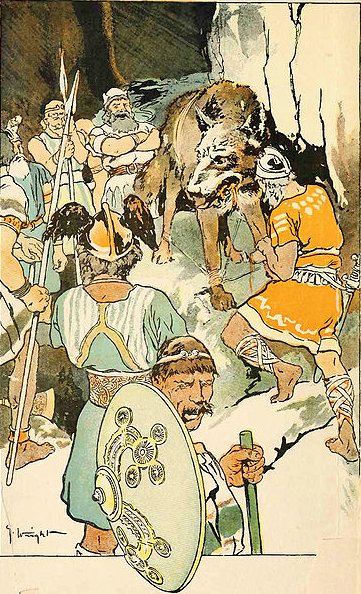
| 15 |
Legs |
η Andromedae (?) |
Wolf |
(11.4) |
Apr 1 (91) |
91 |
|
... The internet site (http://idp.bl.uk/education/astronomy/sky.html) has Latin instead of Greek letters for the stars, e.g. 'h And' (15) which I at first interpreted as θ Andromedae because Θ is number 8 in the Greek alphabet, similar to how H is number 8 in the Latin alphabet. Thus I tried with θ also at 'h Tau' (18). There is no sound h in the Greek alphabet. Notably, Greek θ is similar in design to Phoenician heth, said to be the origin of Η, the capital of η, (cfr at Kb5), which in turn became the origin of Latin H. Although η is Greek letter number 7 in the alphabet its value as a numeral was 8. And in the Latin alphabet H is the 8th letter. Then I changed my mind, because I have both θ¹ and θ² Tauri in my star list, and considering the way the Chinese list has detailed with indices the stars at Root (3) and Tail (6) it appeared unlikely that the creator of the list would have missed an index on θ Tauri. Furthermore, η Tauri is Alcyone, clearly an important star. Alcyone is one of the last stars of winter before Atlas will raise the sky roof high to let in spring and Alcyone could very well be associated with a hairy head (so much hair as to cover the 'face'). I had to change my first idea θ Andromedae to η Andromedae ...
... The form of the letter θ suggests a midline ('waist'), although the origin of θ is the Phoenician tēth which means 'wheel'. This in turn could have originated from a glyph named 'good' which in Egypt was nfr ... θ is the last star in the Ara constellation, and the ancient meaning of this letter was described as a wheel by the Phoenicians but for the Egyptian it meant 'good'. When the wheel of time has come full cycle around and the upside down fire-altar is in the past the times ahead should be good (or lucky Sa'ad) ...
|
| 16 |
Bond |
β Arietis (Sheratan) |
Dog |
(27.4) |
Apr 17 (107) |
107 = 91 + 16 |

The dark forces were defeated by the Sun up above and by Man down below. Likewise could the ferocious Bull be tamed and put into valuable use:

From Pua-Katiki in DECEMBER 27 (361) to the end of the Extended Net (Ox) in JUNE 22 (173) there were 177 (= 6 * 29½) right ascension days:
| ST JOHN'S DAY |
6-25 → 5 * 5 * 5 * 5 |
26 (177 = 6 * 29 ½) |
6-27 |
 |
 |
 |
 |
| Ga4-12 (95) |
413 = 14 * 29½ |
Ga4-14 |
Ga4-15 |
| p Carinae (159.3) |
φ Hydrae (160.3) |
no star listed (161) |
VATHORZ POSTERIOR = θ Carinae (162.1), PEREGRINI = μ Velorum, η Carinae (162.6) |
| Aug 27 |
28 (240 = 8 * 30) |
29 (*161) |
30 |
| °Aug 23 |
24 (236 = 8 * 29½) |
25 (*157 = 314 / 2) |
26 |
| 'July 31 |
'Aug 1 |
2 (214) |
3 (*365 + *135) |
| "July 17 |
Anakena 18
HANGA TAKAURE
(7 days) |
19 (200) |
20 (*121) |
|
Again they went on and came to One Tea. They saw it, looked around, and gave the name One Tea A Hau Maka. Then they went on and came to Hanga Takaure. They gave the name Hanga Takaure A Hau Maka. They made camp and rested at the Bay of Flies for a week (etahi pohitu).
On the eighteenth day of the month of July (Anakena), they went on from Hanga Takaure. They climbed uphill, went on, and reached Poike. When they arrived, they looked around and named (the place) Poike A Hau Maka. They climbed up farther to Pua Katiki. When they arrived there, they looked around and named (the place) Pua Katiki A Hau Maka ...
Possibly they had to stay for a week at Hanga Takaure and for 5 days in Hanga Hoonu because 366 = 354 (= 12 * 29½) + 12 and the kuhane calendar was heliacal, followed the Sun. Similarly the canoe of the Queen threatened to come to early:
... The men on board the royal canoe looked out from Varinga Te Toremo (the northeastern cape of the Poike peninsula). Then they saw the canoe of the queen, the canoe of Ava Rei Pua, as it reached Papa Te Kena (on the northern shore, east of Hanga Oteo). Honga came and gazed in the direction below (i.e., toward the west). He called out to the noteworthy ruler (? ariki motongi) Hotu: 'There is the canoe of the queen! It will be the first one to land!' At this news King Hotu replied to Honga, 'Recite (rutu) ('powerful incantations') as though the ten brothers of the chief (ariki maahu) were one whole (?).' The ten recited with all their might. This is what they recited: 'Let all movement (? konekone) cease!' They recited and sailed on swiftly: Honga, Te Kena, Nuku Kehu, Nga Vavai, Oti, Tive (corrected for 'Sive'), Ngehu, Hatu, Tuki, and Pu (corrected for 'Bu'). He worked mana in the fishing grounds ... [E:80 → 0h, 354 + 10 = 364.] |
| CLOSE TO THE FULL MOON: |
| CHRISTMAS EVE |
DEC 25 |
26 (360) |
27 |
| One Tea |
HANGA TAKAURE |
Poike (place aloft) |
Pua-Katiki |
|
... the progeny of Tu increased: Rongo, Tane, Tangaroa, Rongomai, Kahukura, Tiki, Uru, Ngangana, Io, Iorangi, Waiorangi, Tahu, Moko, Maroro, Wakehau, Tiki, Toi, Rauru, Whatonga - these were the sons ... (Moriori myth of creation accoding to Legends of the South Seas)
Katiki. Halo (of sun, of moon). Vanaga.
Tiki. 1. Chief, boss, director, coordinator; expert, master in a craft, a science, or an art; tiki rerorero kohau rogorogo, rongorongo scribe; tiki moai, sculptor; tiki ahu, master builder who directs and coordinates the construction of ahu; tiki îka. master fisherman, professional fisherman. 2. Ancient title, probably meaning 'grandmaster', used before the names of gods and semigods. Only vague memories remain today of Tiki Makemake, Tiki Te Hatu, Tiki Hati. It is said that the main one was Tiki Makemake and that Tiki Hati was the chief of a band of ákuáku. Vanaga.
| Ka. Ka. Particle of the affirmative imperative, of cardinal numerals, of independent ordinal numerals, and of emphatic exclamation, e.g. ka-maitaki! how nice! Vanaga. Ká. 1. To light a fire in order to cook in the earth oven (see umu): he-ká i te umu, he-ká i te kai. 2. Figuratively: to fire up the soul. To put oneself in a fury (with manava): ku-ká-á toona manava he has become furious. Vanaga. 1. Of T. 2. Imperative sign; ka oho, ka tere, ka ea, begone!; ka ko iha, a greeting T; ka mou, hush; ka oho, goodbye. 3. Infinitive sign; mea meitaki ka rava, a thing good to take; ka harai kia mea, to accompany. 4. A prefix which forms ordinals from cardinals. 5. The dawning of the day. 6. Different (? ke). Churchill. |
| Pua. Pua. 1. A zingiberacea (plant of which few specimens are left on the island). 2. Flower: pua ti, ti flower, pua taro, taro flower, pua maúku pasture flower; pua nakonako, a plant which grows on steep slopes and produce red, edible berries. 3. Pua tariga (or perhaps pu'a tariga), anciently, hoops put in earlobes. 4. The nanue fish when young and tender. Puapua, summit, top, upper part; te puapua o te maúga, the top of the mountain; te puapua kupega, the upper part of a fishing net. Vanaga. Pu'a. 1. (Modern form of pu'o), to cover up something or oneself, to put on; ka-pu'a te ha'u, put on your hat; ka-pu'a-mai te nua, cover me up with a blanket. 2. To respond to the song of the first group of singers; to sing the antistrophe; he-pu'a te tai. 3. To help; ka-pu'a toou rima ki a Timo ite aga, help Timothy with the work. 4. Pu'a-hare, to help a relative in war or in any need; ka-oho, ka-pu'a-hare korua, ko ga kope, go, give your relative a hand, lads. 5. To speak out in someone's favour; e pu'a-mai toou re'o kia au, speak in my favour, intercede for me. Pu'apu'a, to hit, to beat. Vanaga. 1. Flower, ginger, soap; pua mouku, grass. 2. To grease, to coat with tar, to pitch; pua ei meamea, to make yellow. Puapua, a piece of cloth. Mgv.: pua, a flower, turmeric, starchy matter of the turmeric and hence soap. Mq.: pua, a flower, soap. Ta.: pua, id. Ma.: puapua, cloth wrapped about the arm. Churchill. |
| Puaka. Animal, cattle (but not swine horu); puaka toro, steer; puaka tamaroa, bull; puaka tamaahine, heifer; tiaki puaka, neatherd. P Pau.: puaka, beast, animal. Mgv.: puaka, animal, pig. Mq.: puaka, puaá, id. Ta.: puaá, id. Churchill. |

|
| η Aquarii (342.1), σ Gruis (340.4), SITULA (Water-jar) = κ Aquarii (342.7)
*301 = *342.4 - *41.4 |
ε Piscis Austrini (343.5), ο Pegasi, β Gruis (343.8) |
ρ Gruis (344.0), MATAR (Fortunate Rain) = η Pegasi (344.2), η Gruis (344.6), β Oct. (344.7) |
λ Pegasi (345.0), ξ Pegasi (345.1), ε Gruis (345.3), τ Aquarii (345.7), ξ Oct. (345.8), μ Pegasi (345.9) |
| Febr 26 |
27 (*343 = 7 ' 7 * 7) |
28 (59) |
March 1 (425) |
| °Febr 22 |
TERMINALIA |
24 (55) |
25 |
| 'Jan 30 (*315) |
31 |
'Febr 1 (32) |
2 |
| "Jan 16 (*301) |
17 |
18 |
Tua Haro 19 (384) |
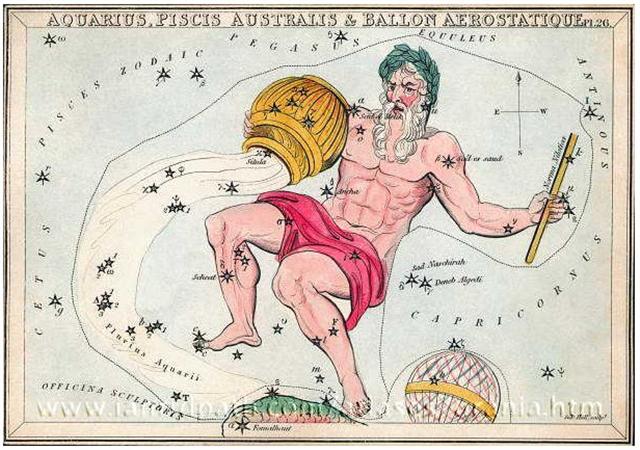
... The Greek lettered κ (Situla) is at the rim of the Urn, not at the top of the Nilometer, where instead there is a Latin letter k. The meaning obviously is for the viewer to connect k with κ, to imagine the Rod inserted into the Urn (Tent) at the K position ... |
| JUNE 20 |
SOLSTICE |
22 (*93) |
23 (174) |
 |
 |
 |
 |
| Ga4-8 |
Ga4-9 |
Ga4-10 (93) |
Ga4-11 (Tama) |
| ALGIEBA (The Mane) = γ Leonis, q Carinae (155.5) |
TANIA AUSTRALIS = μ Ursae Majoris (156.0), GHOST OF JUPITER = NGC3242 Hydrae (156.8) |
Extended Net-26b (Ox)
μ Hydrae (157.1) |
Maru-sha-arkat-Sharru-15 (4th Son behind the King) SHIR (Possessing Luminous Rays) = ρ Leonis (158.9) |
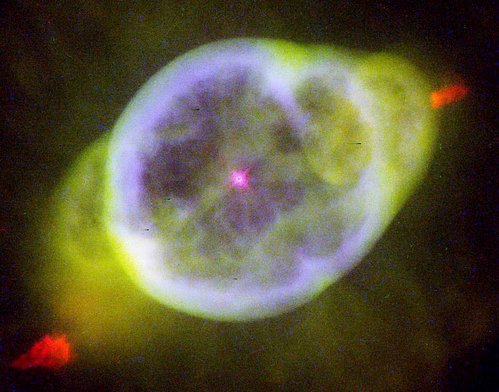 |
|
... Allen does not mention Achird and he has no other name for η Cassiopeiae, but I guess the star could be connected with α Leonis, Regulus, once named Achir (Possessing Luminous Rays): Naturally sharing the character of its constellation as the Domicilium Solia, in Euphratean astronomy it was Gus-ba-ra, the Flame, or the Red Fire, of the House of the East; in Khorasmia, Achir, Possessing Luminous Rays; and throughout classical days the supposed cause of the summer's heat, a reputation that it shared with the Dog-star ... |
| Aug 23 |
24 (4 * 59) |
25 (*157 = *471 / 3) |
26 |
| °Aug 19 |
20 (232) |
21 (*153) |
22 |
| 'July 27 (*128) |
28 |
29 (210) |
30 |
| "July 13 |
14 |
15 (*116 = *348 / 3) |
16 |
|
They went on and reached Akahanga, took a look at it and looked around. They said: This is it! and gave the name Akahanga A Hau Maka. They went on and came to Hatinga Te Kohe and saw that in this place the kohe plant had been broken. They all said, Here it is, the kohe plant, troop of young men! This kohe plant had been broken by the feet of the dream soul and therefore they gave the name Hatinga Te Kohe A Hau Maka.
They went on and came to Roto Iri Are. Again they said, Here it is, Roto Iri Are and named the place Roto Iri Are A Hau Maka. They went on and reached Tama. They looked around and said, This is Tama. They gave the name 'Tama, an evil fish (he ika kino), a very long nose (He ihu roroa).' |
| CLOSE TO THE FULL MOON: |
| DEC 20 (354) |
SOLSTICE (*275) |
22 |
23 |
| Akahanga |
Hatinga Te Kohe |
Roto Ire Are |
Tama |
|
... noho hakahaga, apathy. 4. = haka. Pau.: haga = haka. 5. Mgv.: haga, a fish. Mq.: haka, id. 6. Mgv.: haga, a fishtrap. Sa.: faga, a fish-trap, bird-cage ...
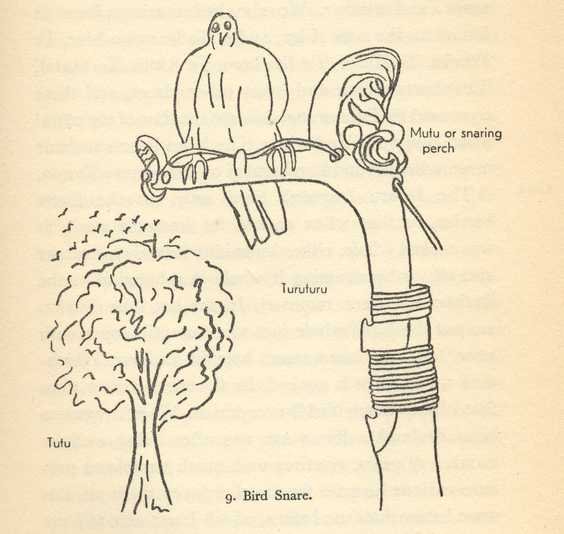
... Orion was seen as a bird snare by the Maori, a place where the 'bird' got stuck and couldn't move away:
... Pewa-o-Tautoru, Bird-snare-of-Tautoru; the constellation Orion in New Zealand. The Belt and Sword form the perch, te mutu or te teke, while Rigel is the blossom cluster, Puanga, used to entice the unsuspecting bird. To visualize the bird-snare we must remember that Orion, as we see it in the northern hemisphere, is upside down to the view obtained from New Zealand where Orion stands in the northern sky ...
... Due south of the cove of Anakena was the cove of Akahanga. This suggests a possible interpretation of Te Pei and Te Pou (the Pillar) as a line drawn between the western and eastern parts of the island ...
.jpg)
|
| Al Sa'ad al Ahbiyah-23 / Shatabisha-25
ε Oct. (338.1), ρ Aquarii (338.2), 2/365 Lac. (338.5), SADACHBIA (Lucky Star of Hidden Things) = γ Aquarii (338.6), π Gruis (338.9) |
β/172 Lac. (339.2), 4/1100 Lac. (339.4), π Aquarii (339.5)
CASTOR (α Gemini)
*298 = *339.4 - *41.4
*339 = *275 + *64 |
δ Tucanae (340.1), ρ Cephei (340.2), ν Gruis (340.3), ζ Aquarii, δ Gruis (340.4), 5/1100 Lac. (340.7), σ Aquarii, 6/650 Lac. (340.9)
PROCYON (α Canis Minoris)
*299 = *340.4 - *41.4 |
υ Oct. (341.0), α/91 Lac. (341.1), HOMAN (Hero) = ζ Pegasi, β Piscis Austrini (341.2), ν Tucanae (341.5), υ Aquarii (341.9) |
| Febr 22 (53) |
TERMINALIA |
24 (*340) |
25 |
| °Febr 18 |
19 (50) |
20 (*336) |
21 |
| 'Jan 26 |
27 (392) |
28 |
29 (*314) |
| "Jan 12 |
13 (378) |
14 |
15 (*300) |
|
... The quarternary system, which divides the island into four quadrants, correlates the four royal sons with the path of the sun as it circles the island counterclockwise. The sequence of the sons is determined by their order of birth. To the first-born goes the region in which the noon sun reaches its zenith, a striking symbol for the highest ranking son; to the second-born goes the region of the setting sun. The name Miru may have been connected with the central Polynesian concept of a region of the dead to the west and its guardian. The third son inheriths the mid-night region, and the last-born inherits the eastern section. Since the last-born, 'a good and strong child' (poki rivariva, poki hiohio), was closest to the father, the region of the rising sun is alotted to him, which gives this region special value. While the successor of the king is like 'the sun at his highest point', the youngest son is like 'the rising sun' ... |
|
Poki. Son, daughter; in wider sense: nephew, niece, child in general. Poki atariki, eldest child, first-born; poki hagupotu, youngest child; poki hâgai, adopted child. Vanaga. Child, infant, nephew, grandchild, posterity, progeny, race; topa te poki, to lie in; poki aana, legitimate; poki gaapu, abortion; poki itiiti, child; poki puepue, abortion; poki tamaahine, girl; poki tamaroa, boy; poki titika, legitimate; poki tuahuri; abortion. Churchill. |
From Pua-Katiki, where the 'red flower' cycle was completed,
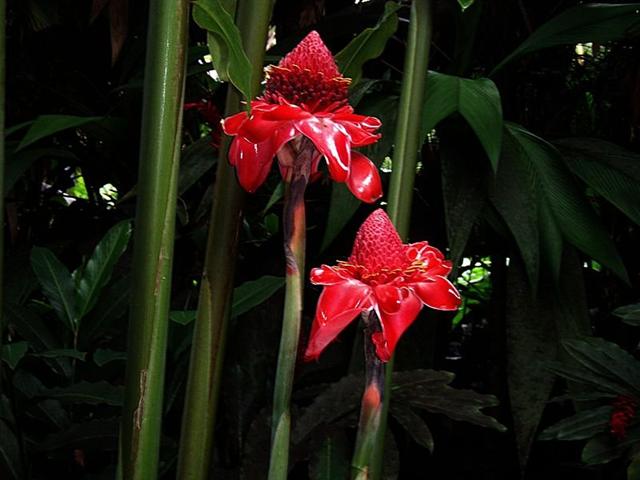
in DECEMBER 27 (361) to the beginning of the Extended Net (Ox) in MAY 27 (147) there were 177 (= 6 * 29½) - (173 - 146) = 177 - 27 = 150 right ascension days:
| MAY
20
(80
+
60) |
21 |
22 |
23
(*63) |
24 (144) |
 |
 |
 |
 |
 |
| Ga3-1 |
Ga3-2
(aaa) |
Ga3-3 |
Ga3-4
(63) |
Ga3-5 |
| AL
TARF
(The
End)
= β
Cancri
(124.3)
RAS
ALGETHI
(α
Herculis)
|
χ
Cancri
(125.2),
BRIGHT
FIRE
= λ
Cancri
(125.4) |
AVIOR
= ε
Carinae
(126.4),
φ
Cancri
(126.8)
*85
=
(*126.4
-
*41.4) |
ο
Ursae
Majoris
(127.4)
*86
=
(*127.4
-
*41.4) |
Pushya-8 (Nourisher) υ Cancri (128.1), θ Cancri (128.2) |
| July
23
(177
+ 27
=
204) |
24 |
25 |
26
(148
+
59) |
27 (208) |
| °July
19
(200
=
177
+
23) |
20 |
21 |
22 |
23 (204) |
| Mayan: |
(205
- 15
=
190) |
191 |
192
(*112
=
*86
+
*26) |
193 |
| 'June
26
(6 *
29½) |
27 |
28 |
29
(180
=
192
-
12) |
23 (204) |
| "June
12
(163
=
177
-
14) |
13
(*84
=
*125.4
-
*41.4) |
14
(165
+
365) Pu Mahore |
Te
Maro
15
(18
*
29½) Poko Uri |
16 (532) Te Manavai |

|
| CLOSE TO THE FULL MOON: |
| NOV 19 |
20 (*244 = *61 + *183) |
21 |
22 |
23 (227 →π) |
| GREDI = α Capricorni (307.2), σ Capricorni (307.5), ALSHAT (The Sheep) = ν Capricorni (307.9) |
Al Sad al Dhabih-20 (Lucky One of the Slaughterers) / Ox / Herd Boy-9 (Buffalo) DABIH = β Capricorni (308.0), κ Sagittarii (308.1), SADIR (Hen's Breast) = γ Cygni (308.4), PEACOCK = α Pavonis (308.7)
|
MINTAKA (δ Orionis)OKUL = π Capricorni (309.6), BOS = ρ Capricorni (309.9)
ARNEB (α Leporis)
|
ALNILAM (ε Orionis)ο Capricorni (310.2), θ Cephei (310.5)
HEKA (λ Orionis)
|
ALNILAK (ζ Orionis)ROTTEN MELON = ε Delphini, φ Pavonis (311.2), η Delphini (311.4), ζ Delphini, ρ Pavonis (311.7)
PHAKT (α Columbae)
|
| Jan 22 (387) |
23 |
24 |
25 |
26 |
| °Jan 18 (384) |
19 |
20 |
21 |
22 |
| 'Dec 26 (360) |
27 |
28 |
29 |
30 |
| "Dec 12 (346) |
13 |
14 (348) |
15 |
16 (*270) |
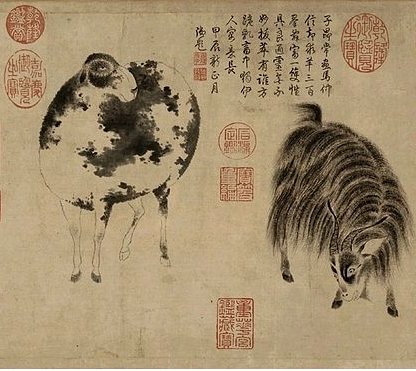 |
| Last 4 of the first 7 places named by Makoi:
Possibly these places were alluding also to the change from the Julian spring equinox to the Gregorian spring equinox:
... When the Pope rearranged the day for spring equinox from number 84 ('March 25) to number 80 (ºMarch 21) the earlier Julian structure was buried, was covered up (puo). At the same time the Pope deliberately avoided to correct the flow of Julian calendar days for what he may have regarded as 4 unneccesary leap days prior to the Council of Nicaea. Thus his balance sheet for days was in order. The day numbers counted from the equinox were increased with 4 and this was equal to allowing the 4 'unneccessary' leap days to remain in place. But he had moved spring equinox to a position which was 4 days too early compared to the ancient model ... These '4 unneccessary leap days' (prior to the Council of Nicaea) were equal in number to the precessional distance in time between the Pope and the time of rongorongo. The Gregorian calendar could therefore be easily understood by the Easter Islanders. The Pope had created a 'crooked calendar' but since his time the precession had fixed it ...

|
| MAY 25 (5-25) |
26 (*266) |
27 |
28 (348) |
 |
 |
 |
 |
| Ga3-6 |
Ga3-7 |
Ga3-8 |
Ga3-9 (68) |
| Āshleshā-9 (Embrace) / Willow-24 (Stag)
π¹ Ursa Majoris, δ Hydrae (129.6), AL MINHAR AL SHUJĀ = σ Hydrae, MUSEIDA = π² Ursae Majoris (129.9)
RAS ALHAGUE (α Ophiuchi)
|
Al Nathrah-6 (Gap)
BEEHIVE (Exhalation of Piled-up Corpses) = ε Cancri, η Pyxidis (130.4), XESTUS = ο Velorum (130.5), ζ Pyxidis (130.7), ASCELLUS BOREALIS = γ Cancri, β Pyxidis (130.9)
*89 = *130.4 - *41.4 |
Extended Net-26a (Ox) / Arkū-sha-nangaru-sha-shūtu-12 (Southeast Star in the Crab)
η Hydrae (131.0), ASCELLUS AUSTRALIS = δ Cancri (131.4), KOO SHE (Bow and Arrow) = δ Velorum (131.6), α Pyxidis (131.8), ε Hydrae (131.9)
*90 = *131.4 - *41.4 |
ι Cancri (132.0), ρ Hydrae (132.4)
*91 = *132.4 - *41.4 |

... A sidelight falls upon the notions connected with the stag by Horapollo's statement concerning the Egyptian writing of 'A long space of time: A Stag's horns grow out each year. A picture of them means a long space of time.' Chairemon (hieroglyph no. 15, quoted by Tzetzes) made it shorter: 'eniautos: elaphos'. Louis Keimer, stressing the absence of stags in Egypt, pointed to the Oryx (Capra Nubiana) as the appropriate 'ersatz', whose head was, indeed, used for writing the word rnp = year, eventually in 'the Lord of the Year', a well-known title of Ptah. Rare as this modus of writing the word seems to have been - the Wörterbuch der Aegyptischen Sprache (eds. Erman and Grapow), vol. 2, pp. 429-33, does not even mention this variant - it is worth considering (as in every subject dealt with by Keimer), the more so as Chairemon continues his list by offering as number 16: 'eniautos: phoinix', i.e., a different span of time, the much-discussed 'Phoenix-period' (ca. 500 years) ... |
| July 28 |
29 (*130) |
30 |
31 (212) |
| °July 24 |
25 |
26 (*127) |
27 (208) |
| 194 |
195 |
196 |
197 (= 185 + 12) |
| 'July 1 |
2 |
3 (*104) |
4 (185) |
| "June 17
Te Kioe Uri |
18
Te Piringa Aniva |
19 (*90)
Te Pei |
Te Maro 20 (185 - 14)
Te Pou |
| CLOSE TO THE FULL MOON: |
| NOV 24 |
25 (*249) |
26 |
27 (331) |
| ROTANEV = β Delphini, ι Delphini (312.3), τ Capricorni (312.6), κ Delphini (312.7), SVALOCIN = α Delphini, υ Capricorni, υ Pavonis (312.8) |
μ², μ¹ Oct. (313.2), DENEB CYGNI (Tail of the Swan) = α Cygni (313.5), β Pavonis (313.6), δ Delphini (313.8) |
Al Sad al Bula'-21 (Good Fortune of the Swallower) / Dhanishta-24 (Most Famous) / Girl-10 (Bat)
YUE (Battle-Axe) = ψ Capricorni (314.3), GIENAH CYGNI = ε Cygni, η Cephei (314.5), γ Delphini (314.6), σ Pavonis (314.7), ALBALI = ε Aquarii (314.8) |
BATEN ALGIEDI (Belly of the Goat) = ω Capricorni (315.8) |
| Jan 27 |
28 (393) |
29 (*314) |
30 |
| °Jan 23 |
24 |
25 (*310) |
26 |
| 'Dec 31 |
'Jan 1 |
2 |
3 (*288) |
| "Dec 17 |
18 |
19 (*273) |
20 (354) |
|
When it grew light, Makoi arose again. He went off to further explore the area. He went along and came to the 'dark rat'. He looked around and said: 'Here we are at the dark rat of Hau Maka'. He gave it the name Te Kioe Uri A Hau Maka. He went on and came to Te Piringa Aniva. When he arrived there, he looked around and gave the name Te Piringa Aniva. He went on and came to Te Pei, looked around, and said, 'Here it is!' So he gave the name Te Pei A Hau Maka. He went on, all alone he went on, and came to Te Pou. When he arrived there, he looked around and again said, 'Here it is!' and gave the name Te Pou A Hau Maka. |
|
For some reason nothing was said about Te Manavai, which in the journey of the kuhane came between Poko Uri and Te Kioe Uri.
... The dream soul climbed up and reached the rim of the crater. As soon as the dream soul looked into the crater, she felt a gentle breeze coming toward her. She named the place Poko Uri A Hau Maka O Hiva. The dream soul continued her search for a residence for King Matua. The dream soul of Hau Maka reached (the smaller crater) Manavai and named the place Te Manavai A Hau Maka O Hiva. The dream soul went on and reached Te Kioe Uri. She named the place Te Kioe Uri A Hau Maka O Hiva ...
... Manavai Hollow where rainwater accumulates; anciently, small, round gardens, preferably situated in low shady spots, where the mahute tree was grown. Vanaga. 1. Brain. 2. Valley, ravine, river, torrent, brook; manavai miro, orchard, Mq.: manavai, valley, brook. Ta.: anavai, river, brook. It scarcely appears that these are fully coordinate. In Tahiti anavai has a clear etymology, ana meaning the bed of a stream. In Rapanui and in the Marquesas mana most readily associates with maga, as water in a forked bed. Churchill ...
However, Manuscript E seems to offer an explanation in the way Makoi remembered how he documented the name: ... I wrote (ta) Te Manavai A Hau Maka on the surface of a banana leaf (kaka), and this is how I left it |
But the Bear was never domesticated in a similar way.

The Mayas had 7 constellations beginning with Aquarius and ending with Leo. We should read from right to left in Mayan fashion:
But neither Aquarius nor Cancer seems to have been honoured with a picture. Aquarius could have been regarded as the last sign of winter and at Cancer there was a gap (Al-Nathrah).
Virgo was the recycling constellation (change station) and Spica was in the Middle between the old and the new generations.
... There is a couple residing in one place named Kui [Tui] and Fakataka [= create a cycle]. After the couple stay together for a while Fakataka is pregnant. So they go away because they wish to go to another place - they go. The canoe goes and goes, the wind roars, the sea churns, the canoe sinks. Kui expires while Fakataka swims.
|
Tui. 1. To sew mats, to make strings. E-tahi tuitui reipá i Te Pei, ekó rava'a e-varu kaukau; i-garo ai i Hiva, i te kaiga, a necklace of mother-of-pearl is on te Pei, few will find it (lit: eight groups of people); it has remained in Hiva, in our homeland. 2. The three stars of Orion's Belt. Vanaga. |
|
Taka, takataka. Circle; to form circles, to gather, to get together (of people). Vanaga. 1. A dredge. P Mgv.: akataka, to fish all day or all night with the line, to throw the fishing line here and there. This can only apply to some sort of net used in fishing. We find in Samoa ta'ā a small fishing line, Tonga taka the short line attached to fish hooks, Futuna taka-taka a fishing party of women in the reef pools (net), Maori takā the thread by which the fishhook is fastened to the line, Hawaii kaa in the same sense, Marquesas takako a badly spun thread, Mangareva takara a thread for fastening the bait on the hook. 2. Ruddy. 3. Wheel, arch; takataka, ball, spherical, round, circle, oval, to roll in a circle, wheel, circular piece of wood, around; miro takataka, bush; haga takataka, to disjoin; hakatakataka, to round, to concentrate. P Pau.: fakatakataka, to whirl around. Mq.: taka, to gird. Ta.: taa, circular piece which connects the frame of a house. Churchill. Takai, a curl, to tie; takaikai, to lace up; takaitakai, to coil. P Pau.: takai, a ball, to tie. Mgv.: takai, a circle, ring, hoop, to go around a thing. Mq.: takai, to voyage around. Ta.: taai, to make into a ball, to attach. Churchill. |
Fakataka swims and swims, reaching another land. She goes there and stays on the upraised reef in the freshwater pools on the reef, and there delivers her child, a boy child. She gives him the name Taetagaloa [= Not-Tangaroa] ...

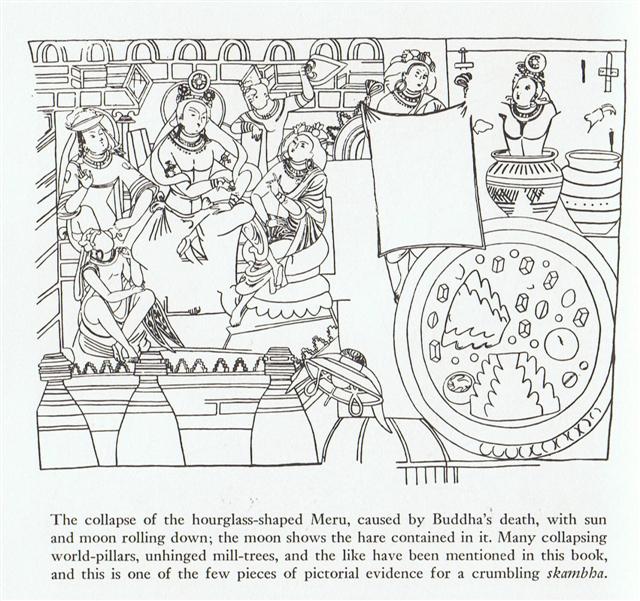
| 0. Nga Kope Ririva Tutuu Vai A Taanga |
| 1. PU MAHORE |
Poko Uri |
Te Manavai |
Te Kioe Uri |
Te Piringa Aniva |
Te Pei |
Te Pou |
Hua Reva |
| Akahanga |
10. Hatinga Te Kohe |
Roto Ire Are |
Tama |
One Tea |
HANGA TAKAURE |
Poike |
16. PUA KATIKI |
| Maunga Teatea |
Mahatua |
Taharoa |
HANGA HOONU |
| RANGI MEAMEA |
Peke Tau O Hiti |
OROMANGA |
Maunga Hau Epa |
HANGA MORIA ONE |
|







.jpg)










.jpg)




























